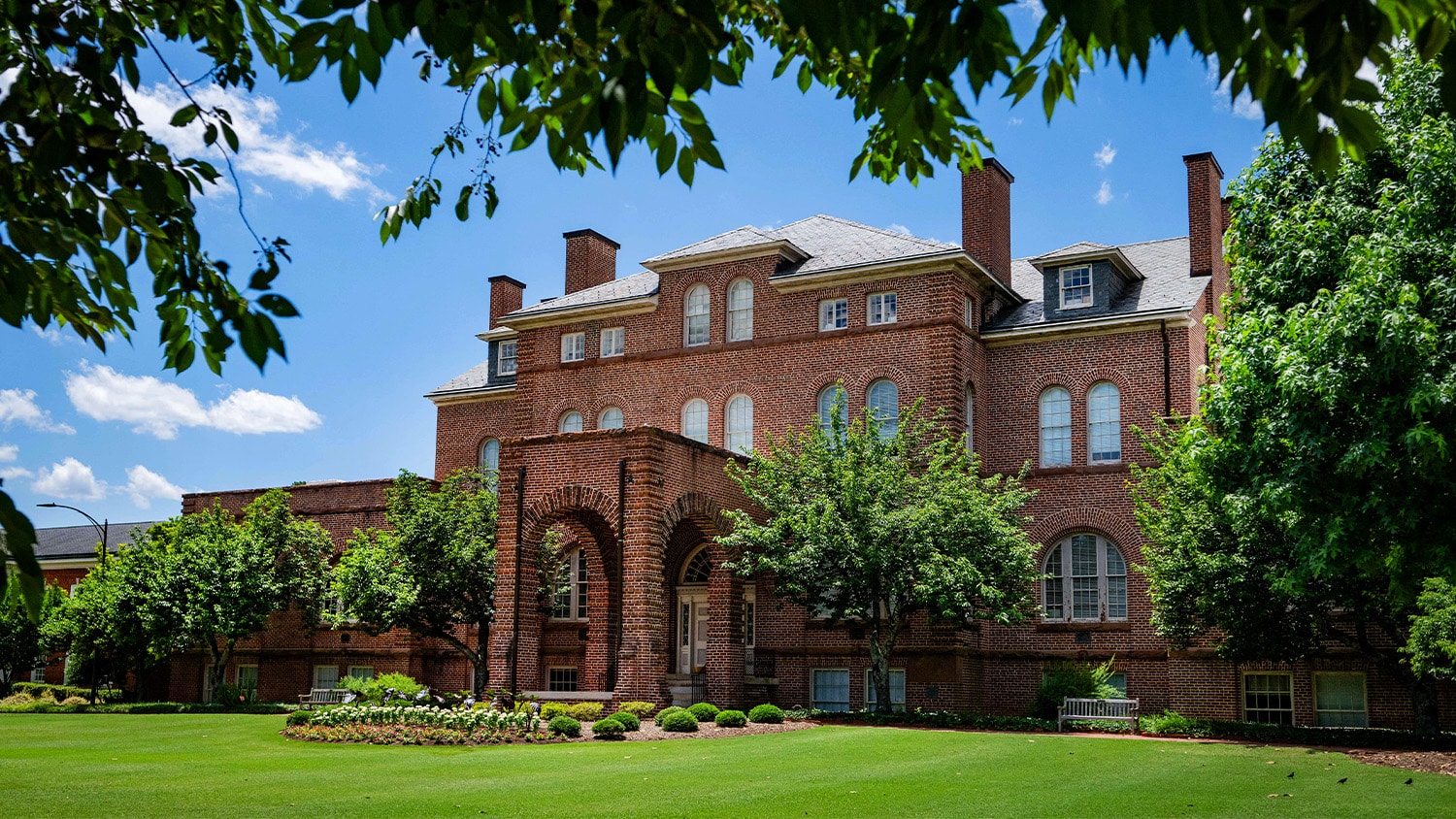Students Create Green Oasis
Mud-caked boots, a flurry of shovels and hammers and no shortage of sweat-streaked brows. For nearly a month now, that’s been the bustling scene on a sliver of real estate nestled between Owen and Turlington Halls. And thanks to the tireless efforts of nearly two-dozen landscape architecture students, what was once a thicket separating the two buildings is now an ecologically innovative haven for NC State students and staff.
Students will host a ribbon-cutting ceremony on Aug. 19 to celebrate the completion of the first phase of the five-year project, dubbed the Artists’ Backyard. The event will begin in Burns Auditorium in Kamphoefner Hall at noon, followed by a tour of the project site.
Assistant Professor Andy Fox led the summer design/build studio to give landscape architecture students real-world experience right on campus. He spearheaded a similar project last year that transformed the area behind Syme Hall into a rain garden.

Administrators in University Housing were eager to partner with Fox to replicate the success of the award-winning project.
Student Concept and Design
According to Fox, what distinguishes the Artists’ Backyard initiative is that it was conceived, designed and built by participating students.
“The ultimate goal through this model of hands-on service learning is showing that you can really maximize the triple-bottom line, which is teaching, research and outreach,” he said. “Why can’t we do all three? That’s the challenge—and the goal.”
Helping achieve that goal is Kyle Stalls, a third-year student who co-designed Phase I.
“This has been a unique opportunity to take something from theory to reality,” he said. “We’ve gotten a chance to get involved in the hard details of putting in the site, dealing with utilities and having to make things work in real life. It’s a challenging and rewarding experience.”
Ecological Responsibility
Throughout the duration of the project, participants have taken careful measures to minimize their collective ecological footprint.
“We’re doing this, partly, by utilizing Low Impact Development (LID) techniques to slow, capture and cleanse storm water on site,” said Fox. “And we’re also repurposing the flagstone that was removed from the old Talley site. These rocks were destined for the landfill, so we’re providing double the benefit—reduce what we buy new, and reduce what we dispose of.”
- Categories:


